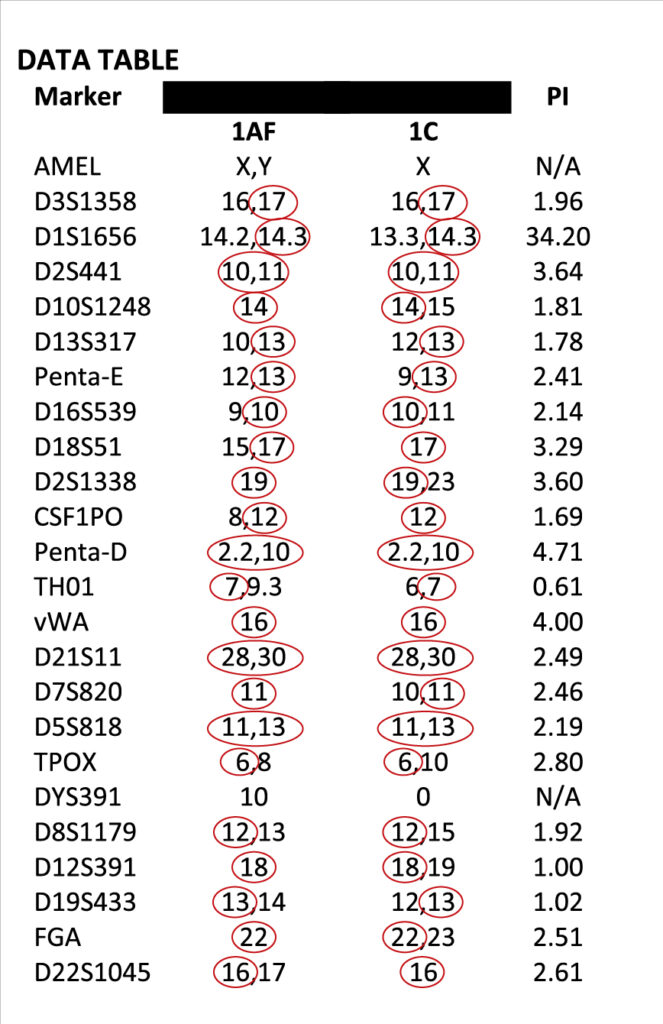How to Understand your Paternity Test Results
Your anticipation is finally over, and you have received your paternity test results. We understand that deciphering these results can be daunting, particularly due to the specialized legal and scientific terminology employed throughout the report. This detailed guide aims to simplify your journey through the paternity DNA test results, explaining each segment of the report with clarity and precision. Our goal is to make your DNA testing experience as straightforward and transparent as possible, acknowledging the deeply personal and sensitive nature of DNA testing.

Overview of Paternity Test Results
- Report ID
- Identification Information
- Conclusion
- Marker/Allele Size Data Table
- Statistics
- Verification(s)
- Order ID
1. Report ID:
This unique identification number is assigned to your case by the laboratory.
2. Identifying Information:
This section contains specific details about each person involved in the test. It includes the collection date, which is the date the DNA samples were gathered. The Case ID, identical to the Report ID, indicates whether the individual is the alleged father (ending in AF) or the child (ending in C). The relationship status (whether the person is the alleged father or child) and the type of DNA sample provided (such as a mouth swab or hair) are also detailed here. Additionally, the race of each individual, as indicated on the DNA sample envelopes, is recorded; if not specified, it defaults to Caucasian. However, please be assured that the results remain accurate regardless of the race marked. This organization aids in the swift retrieval of cases from our database.
3. Conclusions:
The report will give one of two clear outcomes:
- If it says the alleged father "cannot be excluded as the biological father," this means the evidence shows he IS the Biological Father of the Child.
- If it says the alleged father "is excluded from paternity," this indicates he IS NOT the Biological Father of the Child.
4. Marker/Allele Size Data Table:
In our laboratory, we test a minimum of 24 DNA locations, known as "Markers," for each individual involved in the test and compare them. A child inherits one DNA segment from the mother and one from the father, known as "alleles." By employing specialized technology, we measure the length of alleles from each party and compare these lengths at each marker to identify matches. For example, the child (indicated in the 1C column) is tested for two alleles at each marker, and typically, at least one allele matches those of the alleged father (indicated in the 1AF column). Sometimes, mutations occur in the genetic makeup at these markers, either in the child or the alleged father. Our analysts consider these mutations when calculating and drawing conclusions, allowing for the possibility of paternity even in the case of mismatches.
What is the Paternity Index (PI)?
It's like a score that shows how likely the tested man is the child's biological father compared to any random man out there.
How is it calculated?
For each spot (locus) in the DNA we test, we give a score (PI). This score tells us the odds of the tested man being the father compared to a random man.
We then multiply all these scores together to get a big number called the Combined Paternity Index (CPI).
5. Statistics:
Paternity likelihood: This is represented as an odds ratio, illustrating the probability that the alleged father is the biological father compared to a randomly selected unrelated man of similar racial background. A "0" indicates non-paternity, while any other number signifies paternity, with the magnitude of the number reflecting the strength of evidence. For instance, a figure like 452409131 greatly supports paternity.
Probability: The report will show a percentage, either 0.00% or 99.99%.
- 0.00% means there is NO biological father-child relationship.
- 99.99% confirms the man IS the biological father of the child.
6. Verification(s):
Every report is meticulously reviewed and approved by either the Chief Scientific Officer or the Lab Director, ensuring accuracy through our advanced dual processing technology, which double-checks each test before the results are released. For tests that have legal implications, the completed report is officially signed and stamped by the laboratory's Notary Public on the day it is finalized. While the digital PDF version does not feature the physical stamp, it is nevertheless formally signed and dated, maintaining its official status.
7. ORDER ID:
This unique identification number is assigned to your case by My Forever DNA and is typically the same as your order number.
ABOUT MY FOREVER DNA:
For more than a decade, My Forever DNA has stood at the forefront of home DNA testing, showcasing a legacy of excellence. We collaborate with the most highly accredited laboratories in the USA to provide results that are both accurate and confidential. Serving government agencies, businesses, and individuals across the nation, we are committed to delivering dependable and precise outcomes.
Further Questions?
For more information or assistance, please contact us at 402-800-7161 or email sales@myforeverdna.com to speak with a DNA Specialist Today.







